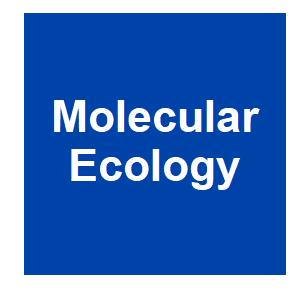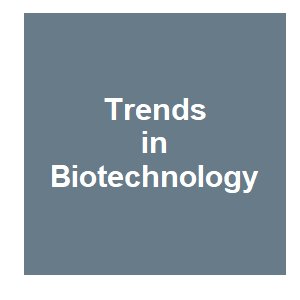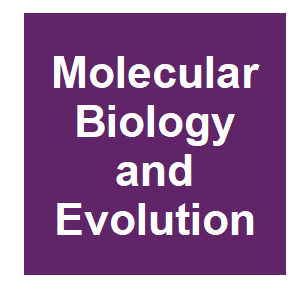
Keywords: DNA

|
The association between mitochondrial genetic variation and reduced colony fitness in an invasive waspJ. Dobelmann, A. Alexander, J. W. Baty, N. J. Gemmell, M. A. M. Gruber, O. Quinn, T. Wenseleers and P. J. Lester, Molecular Ecology, 28:3324-3338. 2019.
Despite the mitochondrion's long-recognized role in energy production, mitochondrial DNA (mtDNA) variation commonly found in natural populations was assumed to be effectively neutral. However, variation in mtDNA has now been increasingly linked to phenotypic variation in life ... Keywords: conversion, DNA, elements, gene drive ecology, gene drive evolution, gene drive genetics, gene drive natural, homing endonuclease, ins, intein, outcrossed sex, outs, pathway, population invasion, saccharomyces-cerevisiae, selfish gene, site-specific endonuclease, system, yeast |

|
Rapid comeback of males: evolution of male-killer suppression in a green lacewing populationHayashi, MN, M.; Kageyama, D., Proceedings of the Royal Society B-Biological Sciences, 285:6. 2018.
Evolutionary theory predicts that the spread of cytoplasmic sex ratio distorters leads to the evolution of host nuclear suppressors, although there are extremely few empirical observations of this phenomenon. Here, we demonstrate that a nuclear suppressor of a cytoplasmic male ... Keywords: conversion, DNA, elements, gene drive ecology, gene drive evolution, gene drive genetics, gene drive natural, homing endonuclease, ins, intein, outcrossed sex, outs, pathway, population invasion, saccharomyces-cerevisiae, selfish gene, site-specific endonuclease, system, yeast |

|
A bigger toolbox: Biotechnology in biodiversity conservationR. T. Corlett, Trends in Biotechnology, 35:55-65. 2017.
Conservation biology needs a bigger toolbox to meet unprecedented challenges. Genomics, fueled by declining sequencing costs, offers novel tools with increased precision for genetic questions previously answered with a few molecular markers, as well as completely new ... Keywords: conversion, DNA, elements, gene drive ecology, gene drive evolution, gene drive genetics, gene drive natural, homing endonuclease, ins, intein, outcrossed sex, outs, pathway, population invasion, saccharomyces-cerevisiae, selfish gene, site-specific endonuclease, system, yeast |

|
Rapid evolution of yeast centromeres in the absence of driveBensasson, DZ, M.; Burt, A.; Koufopanou, V., Genetics, 178:2161-2167. 2008.
To find the most rapidly evolving regions in the yeast genome we compared most of chromosome III from three closely related lineages of the wild yeast Saccharomyces paradoxits. Unexpectedly, the centromere appears to be the fastest-evolving part of the chromosome, evolving even ... Keywords: conversion, DNA, elements, gene drive ecology, gene drive evolution, gene drive genetics, gene drive natural, homing endonuclease, ins, intein, outcrossed sex, outs, pathway, population invasion, saccharomyces-cerevisiae, selfish gene, site-specific endonuclease, system, yeast |

|
The distribution of B chromosomes across speciesPalestis, BGT, R.; Burt, A.; Jones, R. N., Cytogenetic and Genome Research, 106:151-158. 2004.
In this review we look at the broad picture of how B chromosomes are distributed across a wide range of species. We review recent studies of the factors associated with the presence of Bs across species, and provide new analyses with updated data and additional variables. The ... Keywords: conversion, DNA, elements, gene drive ecology, gene drive evolution, gene drive genetics, gene drive natural, homing endonuclease, ins, intein, outcrossed sex, outs, pathway, population invasion, saccharomyces-cerevisiae, selfish gene, site-specific endonuclease, system, yeast |

|
Homing endonuclease genes: the rise and fall and rise again of a selfish elementBurt, AK, V., Current Opinion in Genetics & Development, 14:609-615. 2004.
Homing endonuclease genes (HEGs) are selfish genetic elements that spread by first cleaving chromosomes that do not contain them and then getting copied across to the broken chromosome as a byproduct of the repair process. The success of this strategy will depend on the ... Keywords: conversion, DNA, elements, gene drive ecology, gene drive evolution, gene drive genetics, gene drive natural, homing endonuclease, ins, intein, outcrossed sex, outs, pathway, population invasion, saccharomyces-cerevisiae, selfish gene, site-specific endonuclease, system, yeast |

|
Site-specific selfish genes as tools for the control and genetic engineering of natural populationsBurt, A, Proceedings of the Royal Society B-Biological Sciences, 270:921-928. 2003.
Site-specific selfish genes exploit host functions to copy themselves into a defined target DNA sequence, and include homing endonuclease genes, group II introns and some LINE-like transposable elements. If such genes can be engineered to target new host sequences, then they can ... Keywords: conversion, DNA, elements, gene drive ecology, gene drive evolution, gene drive genetics, gene drive natural, homing endonuclease, ins, intein, outcrossed sex, outs, pathway, population invasion, saccharomyces-cerevisiae, selfish gene, site-specific endonuclease, system, yeast |

|
Adaptation for horizontal transfer in a homing endonucleaseKoufopanou, VG, M. R.; Burt, A., Molecular Biology and Evolution, 19:239-246. 2002.
Selfish genes of no function other than self-propagation are susceptible to degeneration if they become fixed in a population. and regular transfer to new species may be the only means for their long-term persistence. To test this idea we surveyed 24 species of yeast for VDE, a ... Keywords: conversion, DNA, elements, gene drive ecology, gene drive evolution, gene drive genetics, gene drive natural, homing endonuclease, ins, intein, outcrossed sex, outs, pathway, population invasion, saccharomyces-cerevisiae, selfish gene, site-specific endonuclease, system, yeast |

|
Outcrossed sex allows a selfish gene to invade yeast populationsGoddard, MRG, D.; Burt, A., Proceedings of the Royal Society B-Biological Sciences, 268:2537-2542. 2001.
Homing endonuclease genes (HEGs) in eukaryotes are optional genes that have no obvious effect on host phenotype except for causing chromosomes not containing a cop), of the gene to be cut, thus causing them to be inherited at a greater than Mendelian rate via gene conversion. ... Keywords: conversion, DNA, elements, gene drive ecology, gene drive evolution, gene drive genetics, gene drive natural, homing endonuclease, ins, intein, outcrossed sex, outs, pathway, population invasion, saccharomyces-cerevisiae, selfish gene, site-specific endonuclease, system, yeast |

Contact
David O’Brochta
Foundation for the
National Institutes of Health
geneconvenevi@fnih.org
RSS

